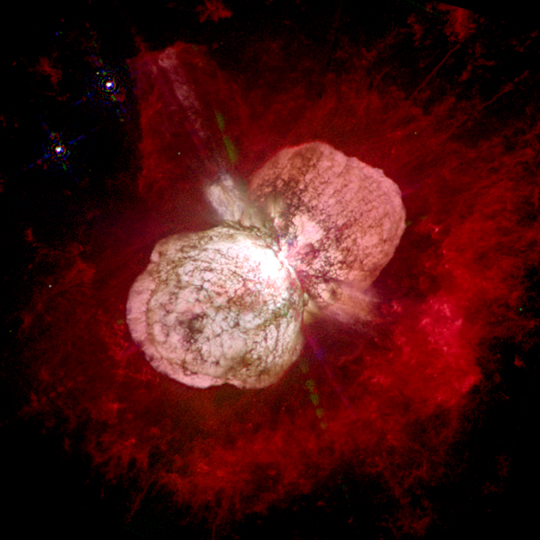
although Eta Carinae is far more massive than SN1987A was. Still, Eta Carinae is a pre-supernova star, and when those lobes expand far enough away, it might look just like SN1987A when the light echo passed through them.
[Credit: ESA/Hubble, NASA]
Just imagine that same explosion but 600 light years from Earth.Although no supernova has been observed in the Milky Way since 1604, supernovae remnants indicate on average the event occurs about once every 50 years in the Milky Way. It does play an important role in stellar evolution. All the kinetic energy sparks new star formation
As to the formation my guess gravitational lensing interacting with dark matter. Im shooting from the hip.
I would guess the figure 8 rings are *hauling* at a greater speed than the bright center ring of gas/matter/plasma, etc.

Let us step way outside of the box: could this be the result of technology? A partially completed Dyson sphere or a ring? coming apart in the nova?